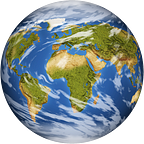Covid-19 and Other People’s Problems
We are knee-deep in despair about Covid-19, and understandably so. We lead the world in confirmed cases and deaths at 1.4 million and 89,399, respectively.[i] More than 30 million people have filed for unemployment insurance, while some small businesses and colleges have closed their doors for good. And as lawmakers and bankers talk about a recession, the air we breathe is heavy with fear.
During a crisis of this nature, statutory powers guide our institutional response. Thus far, all governors have issued an emergency declaration to address Covid-19 challenges. Officials in Washington, D.C. have done the same, as have mayors across the country. So our governmental response to this emergency is regulated.
Nevertheless, our societal reaction to this crisis stands in sharp contrast to past emergencies.
For instance, the 1918–19 influenza flu pandemic killed about 675,000 people in the United States. To put this in perspective, more people died from it than all military combat deaths in the American Revolution, World War I and II, combined. To stop the flu’s spread, our governmental response initiated the largest quarantine of residents in our nation’s history at the time, which included the closure of some schools and businesses. We are doing so on a larger scale for Covid-19. As we try to identify correlations between the two events to draw lessons, one challenge is the former pandemic is simply too far in the past for most of us to wrap our minds around. So our collective memory about that virus in this moment is tempered by time, and our fear about other people’s sickness is peppered with remorse, at best.
The tragedy of September 11, 2001 was not a health pandemic, per se, but we were sick to our stomach as we watched the Twin Towers tumble to the earth. Concern about another attack in New York and Washington was real. So were sleepless nights in San Francisco, Houston, or Richmond because of anticipation of another target. Yet, because 2,900-plus deaths and numerous injuries occurred on the East Coast alone, geography kept much of our psychological fear largely at bay because those problems occurred in other people’s backyards.
Images of floating bodies and submerged houses peeking above floodwaters in New Orleans from Hurricane Katrina, and in Lake Charles from Hurricane Rita, caused national shock in 2005. It reminded us of Biblical flood stories we learned as children. And for a moment, the human suffering suffocated our imaginations. Some of us contemplated if this was a sign of the end times. But this tragedy heavily impacted Louisiana (although people in Texas and Mississippi were impacted, too). Floods likely will never kill most of us. So we wiped away a fearful tear, and moved on because these were coastal people’s problems.
Riots breed fear — at its epicenter and far beyond. The “Red Summer of 1919” denotes several race riots in northern cities such as Chicago, Syracuse, and Scranton, and southern cities too, including rural Elaine, Arkansas where approximately 100–200 blacks and five whites were killed. Ida B. Wells published a book about this massacre. Riots in Watts in 1965, or in Washington, Detroit, and Newark after the assassination of Dr. Martin Luther King in 1968, are other examples. Los Angeles in 1992, Ferguson in 2014, and Baltimore in 2015 are modern reminders. In the end, riots give permission for our pinned-up anxieties about race, place, and living space to percolate to the surface. But over time, our fear subsides because riots are urban people’s problems.
Acquired Immune Deficiency Syndrome (AIDS) and the Human Immunodeficiency Virus (HIV) were growing epidemics in the 1980s. Mostly men, and some women too, died from AIDS suddenly, or watched their organs and bodily functions slowly collapse. Some people with HIV became vulnerable to other infections and diseases. Since the 1980s, more than 700,000 people in the United States have died from AIDS and nearly 1.1 million people are living with HIV. No president has issued an emergency declaration for AIDS or HIV; although President Barack Obama issued a national emergency declaration for the H1N1 Influenza Virus in 2009, and President Donald Trump for the Coronavirus in 2020. When all is said and done, AIDS and HIV produced public concern, but no national outrage. And our fear of each over time became tepid. Partially because many believed its most commonly noted victims, homosexuals and intravenous drug users, brought it upon themselves. Put another way, it is those people’s problem.
Covid-19, however, is erasing the rules of engagement for government and society because this emergency exceeds the limits of our cultural safeguards. Meaning, we usually have a drug to feed our body, a network to assuage our soul, a metaphor to massage our discomfort, or proximity to cushion us from pain and suffering. But when we reach the outer limits of normalcy, an existential threat is authentic.
So a pandemic of fear is real, and thus, the emergency this time has become all people’s problem.
As such, our societal reaction to this crisis exposes more than just inequities in health and wealth. It unmasks deep-seated cultural dynamics regarding problem definition, and its association with our perceptions of pain and suffering across time and space.
[i] According to the COVID-19 Dashboard by the Center for Systems Science and Engineering at Johns Hopkins University on May 17, 2020: https://coronavirus.jhu.edu/map.html.
